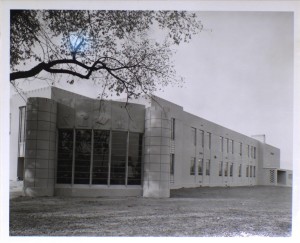[NOTE: This post is not about my friend Chris Webster. He is alive and well]
Chris, my good friend of 20 years, died today. He was 36 years old and leaves behind a wife and two kids in preschool. Dying that young shouldn’t have happened. Leaving behind a wonderful wife and young children should not happen, but it did. Americans aren’t used to seeing our friends and relatives die young. We do not have the cultural mechanisms to justify a natural death that doesn’t involve us lying in bed at a very advanced age with our loved ones (adult children, aged spouse, and verdant grandchildren) surrounding us as we say our last good byes. It’s a fairy tale scenario that we’re all hoping for.
That is not what happened to my friend. His wife sent a Facebook message to all of his friends telling us that, if we wanted to say our goodbyes, we should call his cell phone and leave a voice message. She promised to hold the phone to her husband’s ear as he lay in a coma and play our message, that way he could hear our voices one last time.
I made my call around Noon. By dinnertime, he was gone.
Memories made are not easily forgotten
I first met Chris when I was in junior high. He played on the basketball “B” team of one of our rival schools. We played each other twice that season. Later on, we both went to the same high school. As sophomores, our lockers were only a few feet apart. Chris was always full of energy and jokes. I remember he was a trendsetter—the first hipster. Cool without even trying. The anti-popularity cool kid. I recall the plaid, second-hand store sportscoats from the 70s that he used to wear to school even though we were living in the 1990s. He stood out.
Chris and I were part of a group of kids that were hell bent on exploring the world by any means necessary. We both grew up in religious families, but found a way to break away from that mold as teenagers. After my mom divorced my father, she said we didn’t have to go to church anymore. Chris had to run away from home as a teenager to escape the faith. We were both restless young men searching for life’s answers on our own terms; looking beyond the guidebook.
This search took us far away but it all started at home. Both being from Idaho, Chris and I explored deep into the mountains and forests as young men. Camping in the forest and talking the gibberish that young men speak, we thought we were expanding our horizons beneath those starry mountain skies. We likened ourselves to ancient philosophers that were grappling with the age-old conundrums that young people had faced for tens of thousands of years. We thought we were being adventurous, like Jack Kerouac, Hunter S. Thompson, or Timothy Leary. We took the same paths as those forebears but, I think, came to different conclusions. Our thoughts and actions were shaped by the time in which we lived, like all men. Poets weaving parables based on gangster rap or Nirvana’s Nevermind.
We also took to the road en route to urban places, places where other people were going through the same search. Goading our beat-up, abused vehicles over winding mountain highways, snow-coated pathways, and searing dirt roads in the desert took us to places we’d never been. Concerts, meet-ups with friends, and the simple desire to see a new city drove us onward. Every adventure brought stories; memories that are slowly fading into epic dreams as we get older. Each story got inflated with each retelling until they were so fantastical that the women we eventually married had to ask our friends if these crazy adventures even happened at all. We always assured them that every word was true because, in our minds, that was really how it happened.
Then, Chris and I both got married. We bought houses and had children. We were now husbands, fathers, tax payers, respectable. Our priorities changed as fast as we learned how to change an infant’s diaper. How can I make more money? How can I teach my son how to read before kindergarten? Does the local school have high enough test scores? Will my wife’s car outlast the car payments? Is this living? Is this life? After looking deep into my children’s eyes as they smile, I am assured that this is real. This is life now. I’m sure Chris came to the same conclusion.
Our search for the meaning of life continued; only, now, we were bringing along our wife and kids. Camping trips introduced the young’uns to the outdoors; that place where cell phones don’t work and your mother worries about your every step. We showed our kids the same starry mountain skies, except, now, the messages they told were different. The message now wasn’t just meant for some twentysomething men drinking beer around a fire. Now they were meant to show our kids where we’d been and where they were going. We did our best to convey complex thoughts to a toddler who probably understood better than we did.
Weekend trips to Vegas with “the wife.” Weekend trips to Home Depot with “the wallet.” Weekend trips to Disneyland with “the kids.” And, weekend trips to the couch for a few minutes of peace and quiet were all part of our lives now. Chris and I were busy, but that wasn’t a bad thing. Our efforts, our work, was dedicated to showing our parents that we were worth a sh*t. We worked to gain the warm fuzzy feeling that sweeps over your body when your wife says she’s proud of you with a smile. We were proudly middle class and couldn’t help but show it to the world.
The journey continues for both of us, except not in the same world.
How does any of this relate to historic preservation?
In the end, all we have to show for our lives is a fragile, thread-bare patchwork of memories and some scraps of material culture. Historic preservation and archaeology is about keeping those scraps of material and memories together. It’s about breathing life into the decrepit heritage that we all hold so dear.
 The junior highs that Chris and I attended are gone. Our high school was built in 1958, but it isn’t on any historic register and won’t be any time soon. The house I lived in during high school is now a parking lot. Some of the places where we used to camp and wax poetically are now townhouses. The places where Chris and I and thousands of other people, past and present, shared our deepest thoughts and commitments have been irreversibly changed by progress. I know that not everything should be saved. Rarity is what makes history worth preserving. But, we also need to remember that wisdom really does sit in places.
The junior highs that Chris and I attended are gone. Our high school was built in 1958, but it isn’t on any historic register and won’t be any time soon. The house I lived in during high school is now a parking lot. Some of the places where we used to camp and wax poetically are now townhouses. The places where Chris and I and thousands of other people, past and present, shared our deepest thoughts and commitments have been irreversibly changed by progress. I know that not everything should be saved. Rarity is what makes history worth preserving. But, we also need to remember that wisdom really does sit in places.
As professionals, we get caught up in making sure we’ve done due diligence or properly included the descendant community’s opinion in our decision-making process (as long as it doesn’t interfere with the agency or client for whom we’re working). Sometimes, we even ponder if we’ve done justice to the resource. All of that pandering and proselytizing omits the most important thing about what we do: preservationists make sure the remains of our ancestors are remembered.
Historic districts and traditional cultural places (TCPs) commemorate the places in which our ancestors lived. Archaeological sites were made by people that lived thousands of years ago; folks that lived lives eerily similar to the ones Chris and I lived in the present. “Material culture” is tangible evidence of these past.
We were not the first ones to come of age in Boise, Idaho. We weren’t the first to ponder the mysteries of life in Idaho’s forests, hills, and deserts, not by a long shot. We were not the first men to start fruitful lives, marry wonderful women, and attempt to pass on what we know to our children. Human beings have been doing that for tens of thousands of years. People in Idaho have been doing that for thousands of years. Our paths were not unique, but they were part of a continuum of life. This continuum is embedded in landscapes and enshrined in places.
This is what descendant communities are trying to tell us every day. There is something special about the places where our ancestors made their footprints. The lessons learned in the past are conveyed through the remains left behind by our ancestors. Preserving a select few of these places is the preservationists’ craft. It is our gift to the world.
Ancestors are made every day. Now, Chris is one of my ancestors.
Ask me how you can make a contribution to Chris and his family. Write a comment below or send me an email.
Check out Succinct Research’s most recent publication Blogging Archaeology. Full of amazing information about how blogging is revolutionizing archaeology publishing. For a limited time you can GRAB A COPY FOR FREE!!!! Click Here
 “Resume-Writing for Archaeologists” is now available on Amazon.com. Click Here and get detailed instructions on how you can land a job in CRM archaeology today!
“Resume-Writing for Archaeologists” is now available on Amazon.com. Click Here and get detailed instructions on how you can land a job in CRM archaeology today!
 Small Archaeology Project Management is now on the Kindle Store. Over 300 copies were sold in the first month! Click Here and see what the buzz is all about.
Small Archaeology Project Management is now on the Kindle Store. Over 300 copies were sold in the first month! Click Here and see what the buzz is all about.
Join the Succinct Research email list and receive additional information on the CRM and heritage conservation field.
Get killer information about the CRM archaeology industry and historic preservation.




